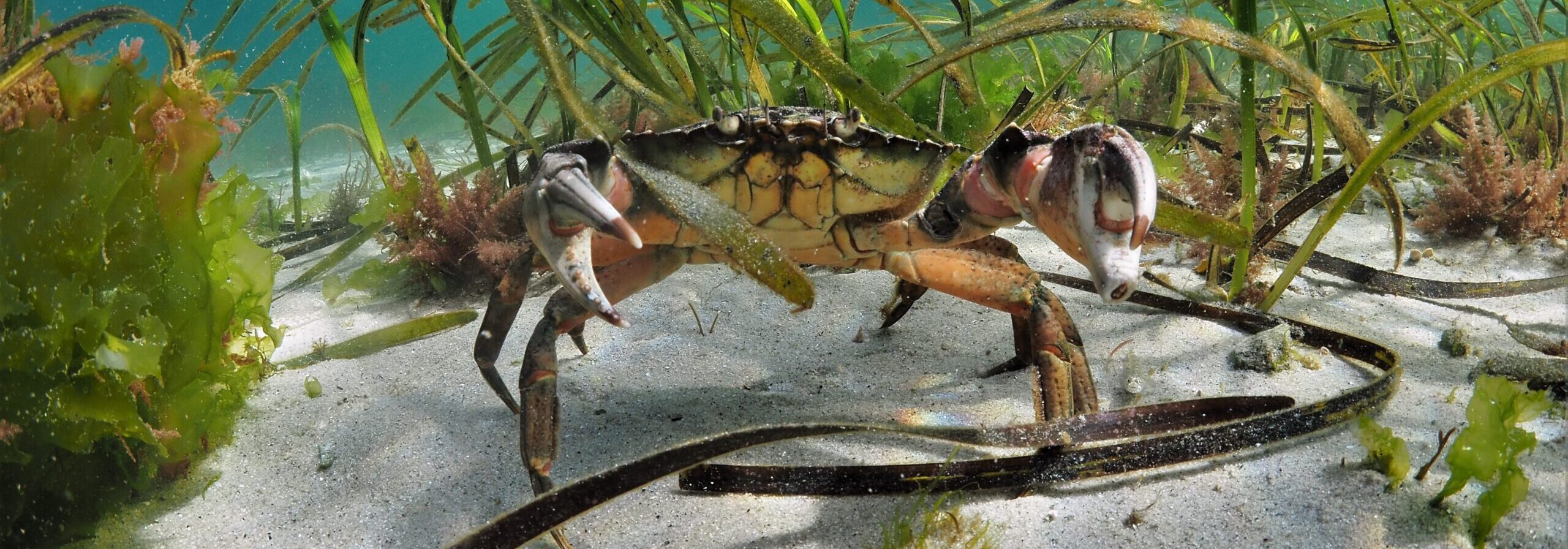Zostera marina seagrass with a Green Shore crab (Carcinus maenas), Isles of Scilly, Cornwall, England
Credit: Michiel Vos / Ocean Image Bank
Seagrass restoration has become an important management-tool to counteract the widespread losses of seagrass meadows and their associated biodiversity. However, consensus on how to evidence the improvement in local biodiversity and ecosystem functioning from restoration programmes is yet to be reached.
How do we evidence the biological diversity of seagrass ecosystems in all of its forms?
President of the EU Commission Ursula von der Leyen has come out in favour of creating a market in ‘nature credits’ in the EU but if these are going to be evidence based credits then we need robust, place-based data.
We need a better understanding of genetic diversity, and the microbiome, we need to evidence the changes to the infauna and epifauna that result from restoration, and ultimately we want to establish the connections between healthy seagrass meadows and the diversity and abundance of mobile fauna that moves in and out of the seagrass meadows.
We need all of that, and we need it at the system level. We need empirically validated metrics based on real place-based data (not proxy’s).
